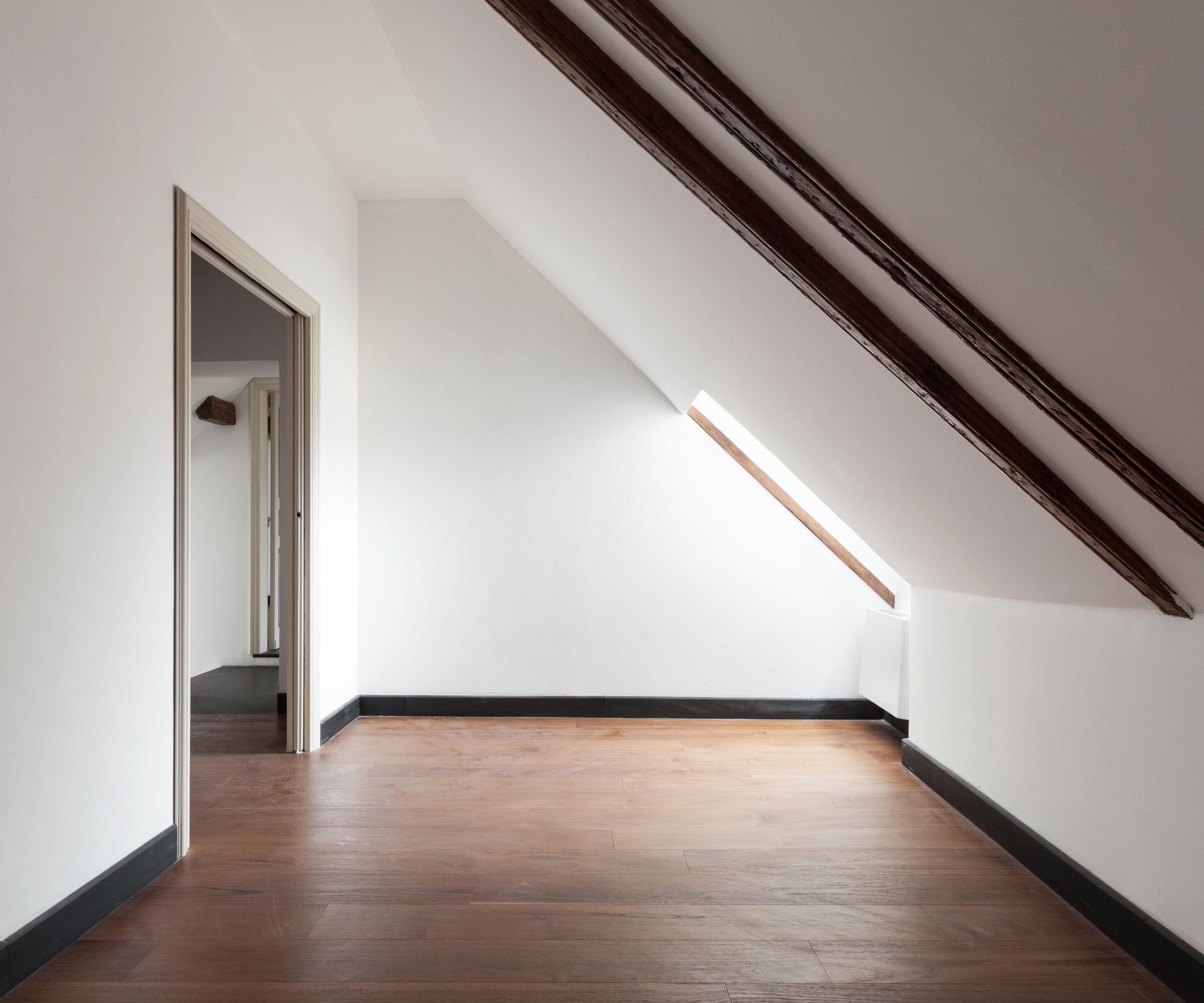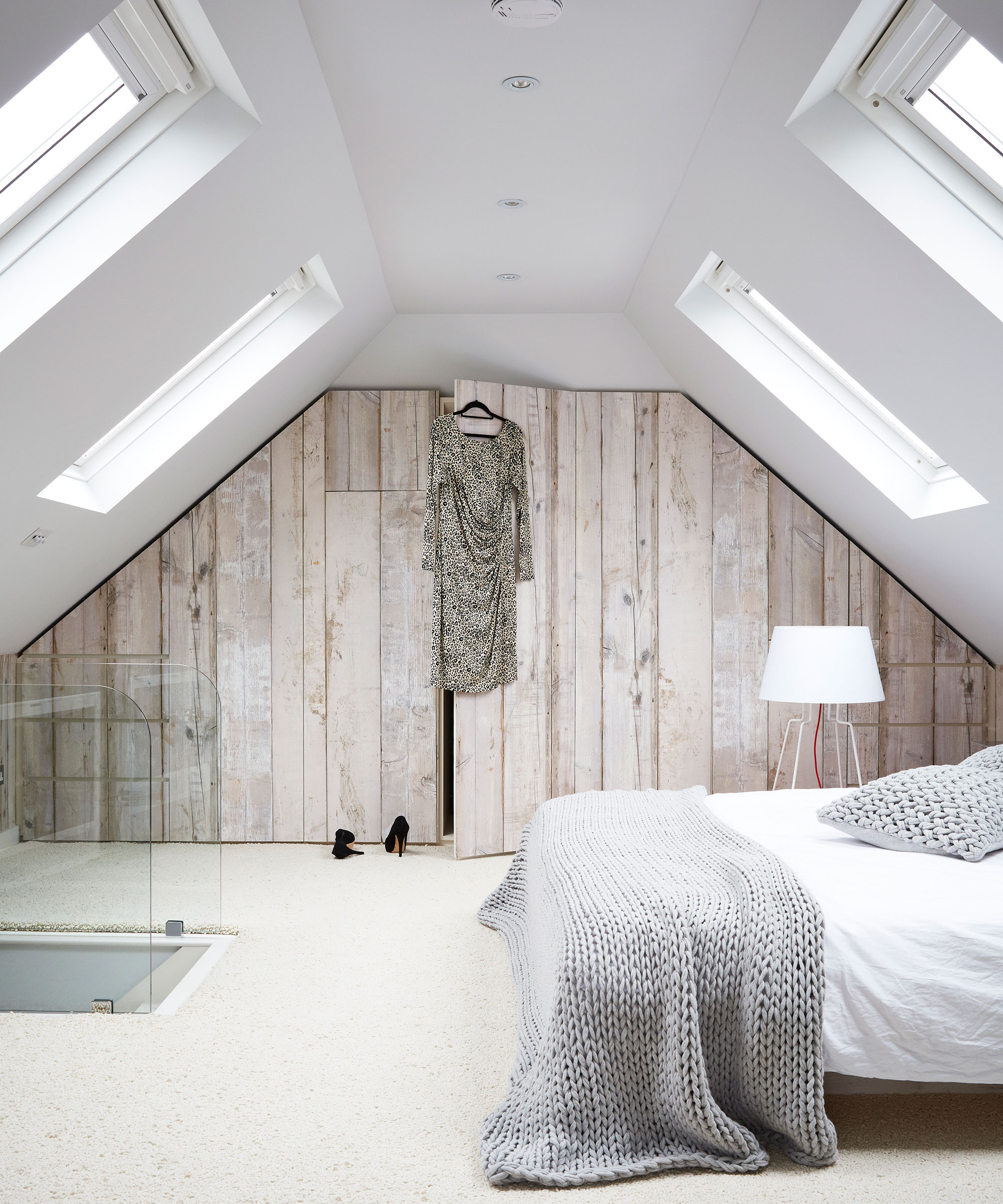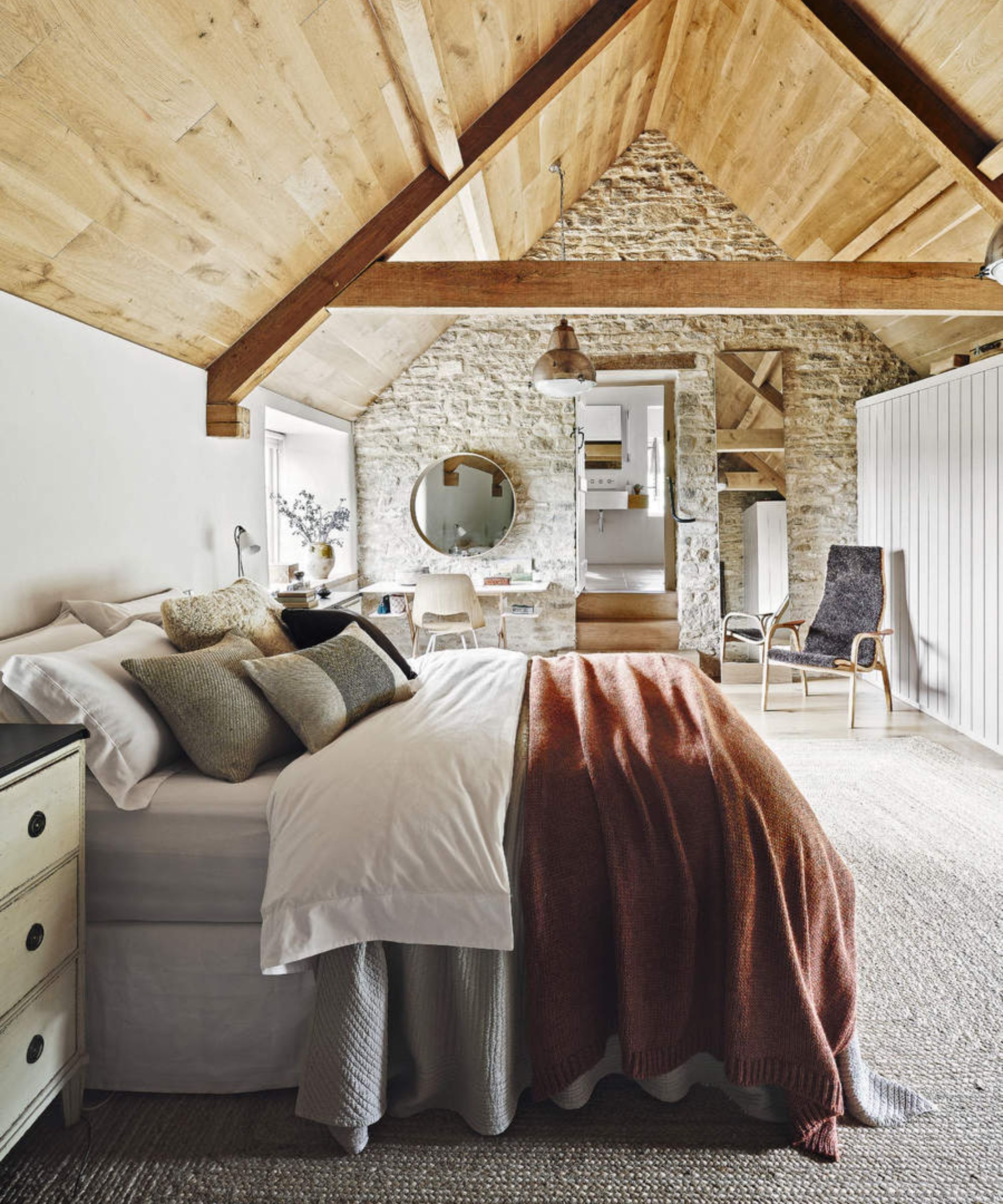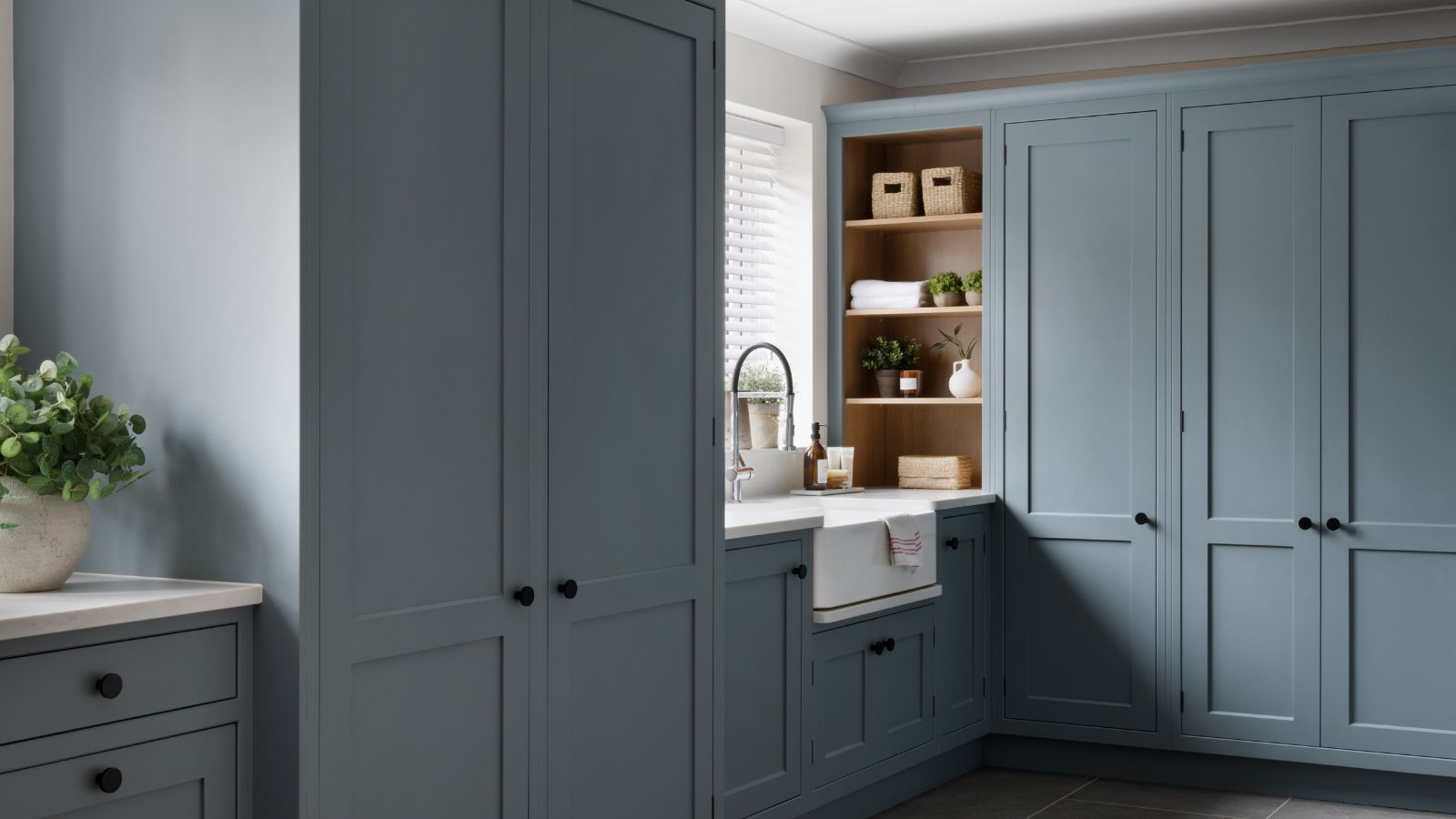How to ventilate an attic – and why it’s so important
Discover how to create good attic ventilation and keep your home healthy and sound


Knowing how to ventilate an attic is expertise any owner of a house should have – surprising as that might seem. But both insulation and adequate ventilation are crucial for an energy-efficient and sturdy home.
Good attic ventilation is a must for attic safety, preventing unhealthy mold growth, avoiding the buildup of heat in summer, and reducing the ice damming that can damage a roof in the winter months.
Here, we’ve put together all the know-how that’s required on attic ventilation to keep your home in good structural condition and your energy bills down.
How to ventilate an attic
Attic ventilation lets in cold air from outside your home in winter and moves hot air out of the attic during summer. It can seem counterintuitive to let air in, but there are sound reasons to do so, which we’ll expand on below.
Be mindful that there isn’t one rule for all attics. ‘Generally speaking, an attic needs ventilation only when the insulation is sitting on the attic floor and not necessarily when the insulation is installed between the rafters,’ explains Alessandro Ronfini, partner and Founder of DEMO Architects.
Not sure if your attic needs ventilation? ‘If the insulation is over your head, you probably need a different solution,’ advises Alessandro. ‘Talk to a professional to figure out the best path forward.’

Alessandro Ronfini, AIA, is an architect who lives and works in New York City and the Hudson Valley. In his practice, DEMO Architects, he focuses on building outstanding, healthy, and energy-efficient buildings, with the belief that what is between the walls is as important as the materials on their surface.
Intake and exhaust

'Typically, an attic should have two types of vent - intake vents and exhaust vents,’ explains John Parks, co-owner and COO of Advanced Insulation System.
‘Intake vents are placed lower down, typically in the eaves of your attic, and otherwise known as soffit vents. This pulls cooler air into the attic space. Exhaust vents are positioned higher up, near the peak or ridge cap, to allow hot and humid air to escape through the top.’

John Parks is the co-owner and chief operating officer of Advanced Insulation System, a leading provider of attic services, commercial, and residential insulation solutions. With over 10 years of experience in the industry, John is a seasoned expert in all aspects of attic ventilation, insulation installation, and energy efficiency optimization.
Vent design

Vents are typically not complicated structures. ‘Most attics can be sufficiently ventilated with passive vents, meaning simple perforations with a grille,’ says Alessandro Ronfini.
‘Vents should be installed on walls on opposite sides of the building to create cross ventilation,’ he explains. ‘Vents installed only on one side do not allow sufficient airflow.’
If an attic needs vents, DIY installation is possible, but get advice first. ‘You should contact a professional first to inspect and offer their recommendation,’ says John Parks. ‘Simply adding vents is not always the answer.
‘However, installing vents is not the hardest thing to do if you’re familiar with cutting into roofing or framing, installing flashing, etc,’ he adds. But bear in mind that possessing sufficient skills is vital. ‘There are risks of improper installations, which could cause roof leaks and lead to worse damage,’ says John.
Active vents and attic fans

Passive vents aren’t always enough for an attic. ‘In some climates and areas where wind is scarce (like in cities where there are many obstacles to air flow), an active vent with a fan to pull air in and out of a building might be a better fit,’ says Alessandro Ronfini.
‘Fans should always work in tandem with another fan spinning in the opposite direction or a vent. This guarantees that the air they move is exterior air and is not the conditioned air within your building.’
‘Attic fans are a great way to force air and/or increase ventilation,’ agrees John Parks. ‘One popular way to do this would be using an attic gable fan. These are installed into the gable vent on either side of the house and tied into the electrical. They’re often controlled by a thermostat, which kicks itself on when a higher temperature is detected. They can also be connected to humidistats that detect higher levels of humidity.
‘Another popular fan is known as the whole house fan,’ he continues. ‘These are for cooling the house and attic. These work by pulling air from the outside through the home and exhaust into the attic. When the air exhausts into the attic it helps to bring down the temperature of the attic space.’
Vent maintenance
Vents need to be maintained so they can continue to fulfill their purpose. ‘Vents pull in air, but also leaves, bugs, and debris, so it’s a good habit to check that they are clean so that nothing reduces the airflow,’ explains Alessandro Ronfini. ‘Spring and fall are when they are more likely to get dirty, so a seasonal check is absolutely worth it.’
Reasons for attic ventilation

We’ve noted how to ventilate an attic, but why is it important?
‘Many single-family houses in the US have a ventilated attic immediately below the roof,’ explains Alessandro Ronfini. ‘Ventilating such an attic is important because to keep that interior space clear of condensation, the interior air should be relatively close to the exterior temperature and remain as dry as possible.
‘In the summer, in hot climates in particular, ventilation avoids the greenhouse effect in the attic, which might cause the interior air temperature to rise well above the exterior temperature, with detrimental effects on the efficiency of your air conditioner.
‘Insufficient and vapor-permeable insulation can cause humidity to escape from your house and turn to condensation on the underside of your roof. Conversely, vapor-impermeable insulation might trap humidity and not allow for surfaces to dry properly, thus leading to mold.’
Attic ventilation can also reduce the threat of ice damming when snow melts from the roof but refreezes at the gutters. This can damage the roof.
Energy efficient

Ventilating an attic correctly is part of ensuring a home is as energy-efficient as possible. ‘In general, a home’s energy efficiency depends on the attic environment temperature,’ explains John Parks.
‘It’s one thing to have insulation, but insulation does not keep the attic cooler. The temperature of the attic space is affected by the outside temperatures, which affects the life and operation capability of your HVAC and insulation materials, all of which cost you money when they don’t work properly or efficiently.
‘Want to save money on your bills? Ensure the attic is set up so the temperature is regulated. Ventilation, insulation, radiant barriers, and air sealing all can achieve this.’
FAQs
How do you know if an attic is properly vented?
Checking the temperature and humidity can let you know that an attic is properly ventilated. In an attic without sufficient ventilation, you might encounter a musty smell or see mold, or there could be condensation, or it might be excessively hot. Remember that while an attic should be insulated, this must not impede ventilation. ‘Insulation could cause problems if it’s blocking the ventilation system,’ says John Parks, co-owner and COO of Advanced Insulation System. ‘Depending on what type of insulation is used, baffles can be installed to keep the insulation from blocking the vents.’
An attic is a useful part of a home, not least for storage. There are some items you should never store in the attic, but there are those you can store to free up space elsewhere. To maintain an attic’s structural integrity, pay attention to the possibility of unwanted residents. Getting rid of squirrels in the attic is a common requirement.
Sign up to the Homes & Gardens newsletter
Design expertise in your inbox – from inspiring decorating ideas and beautiful celebrity homes to practical gardening advice and shopping round-ups.

Sarah is a freelance journalist and editor. Previously executive editor of Ideal Home, she’s specialized in interiors, property and gardens for over 20 years, and covers interior design, house design, gardens, and cleaning and organizing a home for Homes & Gardens. She’s written for websites, including Houzz, Channel 4’s flagship website, 4Homes, and Future’s T3; national newspapers, including The Guardian; and magazines including Future’s Country Homes & Interiors, Homebuilding & Renovating, Period Living, and Style at Home, as well as House Beautiful, Good Homes, Grand Designs, Homes & Antiques, LandLove and The English Home among others. It’s no big surprise that she likes to put what she writes about into practice, and is a serial house renovator.
-
 Kylie Jenner, Tommy Hilfiger, and Lenny Kravitz transform their homes with prints – the London Original Print Fair Director has a method that makes their look 'accessible and affordable' in your home
Kylie Jenner, Tommy Hilfiger, and Lenny Kravitz transform their homes with prints – the London Original Print Fair Director has a method that makes their look 'accessible and affordable' in your homeCelebrities from the Kardashians to Lenny Kravitz decorate their homes with prints by famous artists, and it's easier to recreate than you might expect
By Sophie Edwards
-
 ‘Completion days’ are the answer to laundry doom piles, pro organizer claims – here’s how this hack can instantly stop fresh laundry from piling up once and for all
‘Completion days’ are the answer to laundry doom piles, pro organizer claims – here’s how this hack can instantly stop fresh laundry from piling up once and for allStay on top of your laundry with the 'Completion days' method
By Chiana Dickson